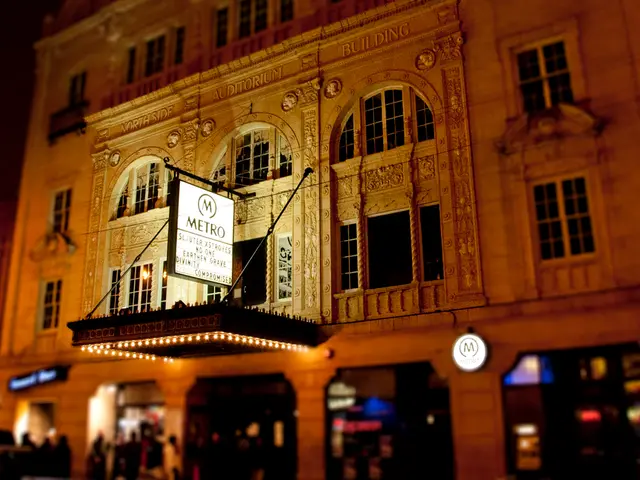Rebound of Commercial Real Estate in the UK - Is Investment Worthwhile?
After a prolonged winter, there are signs of recovery in the UK's commercial property sector. According to Savills, the vacancy rate in London's City and West End office market has dropped from a peak of 9.5% in late 2023 to 7.4%, although it remains higher than the long-term average of 5.9%.
Online shopping growth has slowed, allowing shopping centres to adapt. Customers now view them as destinations, preferring to browse stores, dine in cafes and restaurants, and enjoy leisure activities like bowling. Retailers have discovered that online shoppers' returns can be costly to manage, so physical stores now serve dual purposes – as sales outlets and showrooms for online purchases.
In late 2024, Land Securities purchased the Liverpool One shopping centre, a premier shopping destination in the UK, for £490 million. They anticipate a 7.5% income return and plan to increase that figure in the coming years.
Capital has flowed into "big-box" distribution hubs, leading to a predicted slowdown in rental growth in that subsector. However, there is a supply shortage of multi-let industrial and distribution estates. Meanwhile, the alternative property sector, including hotels, self-storage, residential and student accommodation, is generally robust.
Nick Montgomery, the manager of the Schroder Real Estate Investment Trust, says the market has had several false dawns since its peak in late 2022. He notes that values have declined by 20%-25% since the peak but have not fallen as drastically as they did in 2009. Furthermore, while rental values were flat during the 2009 downturn, they have increased by 10% since late 2022.
The return to the office has been more prominent in London than in the regions. Tenants now demand better facilities, energy efficiency, and cafes, rather than just a basic kitchenette. However, construction costs have risen sharply, and buildings quickly become outdated. With initial rent-free periods of up to three years, short leases, and obsolescence, it has become challenging for developers to make a profit. As a result, central London rents are escalating – £150 per square foot in the City and £250 in the West End.
Refurbishing quality buildings in sought-after locations is more affordable, allowing landlords to offer shorter leases at lower rents. This strategy is a significant part of Derwent London's portfolio, and they report high tenant demand. Shares in the company trade at a 40% discount to net asset value (NAV).
Great Portland Estates' shares trade at a 30% discount, reflecting a £350 million rights issue at a discount in May 2024. Such moves are rarely popular with investors, but they indicate management enthusiasm about the sector's outlook. In April 2025, Norway's sovereign wealth fund invested £570 million for a 25% stake in Shaftesbury Capital's Covent Garden estate, validating its NAV and reducing its debt. The shares have since risen over 20%, but still trade at a 30% discount.
Land Securities, with £10 billion in assets and a 30% discount to NAV, has been expanding its retail portfolio. British Land, with £8.7 billion in assets, has focused on "campuses" that combine offices, retail, leisure, and public spaces. A quarter of its assets are retail parks, and 10% are shopping centres. Their shares trade at a 30% discount as well.
Schroder Real Estate Investment Trust's smaller size allows it to find value in areas that larger investors overlook. Rental income of £30 million is below the "reversionary rent" of £40 million, indicating untapped potential. Less than 10% of the portfolio is in London, and over 40% is in the North. The trust's debt is significant, but 75% of it is locked in for 11 years at a low interest rate of 2.5%, providing stability.
Schroders forecasts a total annual return of 8%-10% for UK real estate over the next four years. The group aims to generate value through repurposing units on its estate and redeveloping older buildings. Montgomery also sees opportunities in affordable housing, inflation-linked income from hotels, and owning and operating properties rather than just owning them.
Sentiment in the property market can be sensitive to higher gilt yields and global factors, Montgomery warns. However, interest rates are expected to remain lower than historical averages, promoting recovery. "With a shortage of supply, we don't need a surge in demand to see decent returns," he adds. Share prices in the sector have begun discounting such a recovery, but there should be more growth to come.
- In the UK's commercial real-estate sector, there are signs of recovery, with the vacancy rate dropping significantly, suggesting that investing in property could yield dividends.
- During the recovery, retailers are finding that physical stores serve dual purposes, both as sales outlets and showrooms for online purchases, indicating a shift in the industry.
- Companies like Land Securities are capitalizing on this trend, purchasing prime real-estate properties like the Liverpool One shopping centre and expecting high income returns.
- Meanwhile, real-estate sectors like multi-let industrial and distribution estates are facing a supply shortage, leading to a predicted slowdown in rental growth but potential for future investment opportunities.








